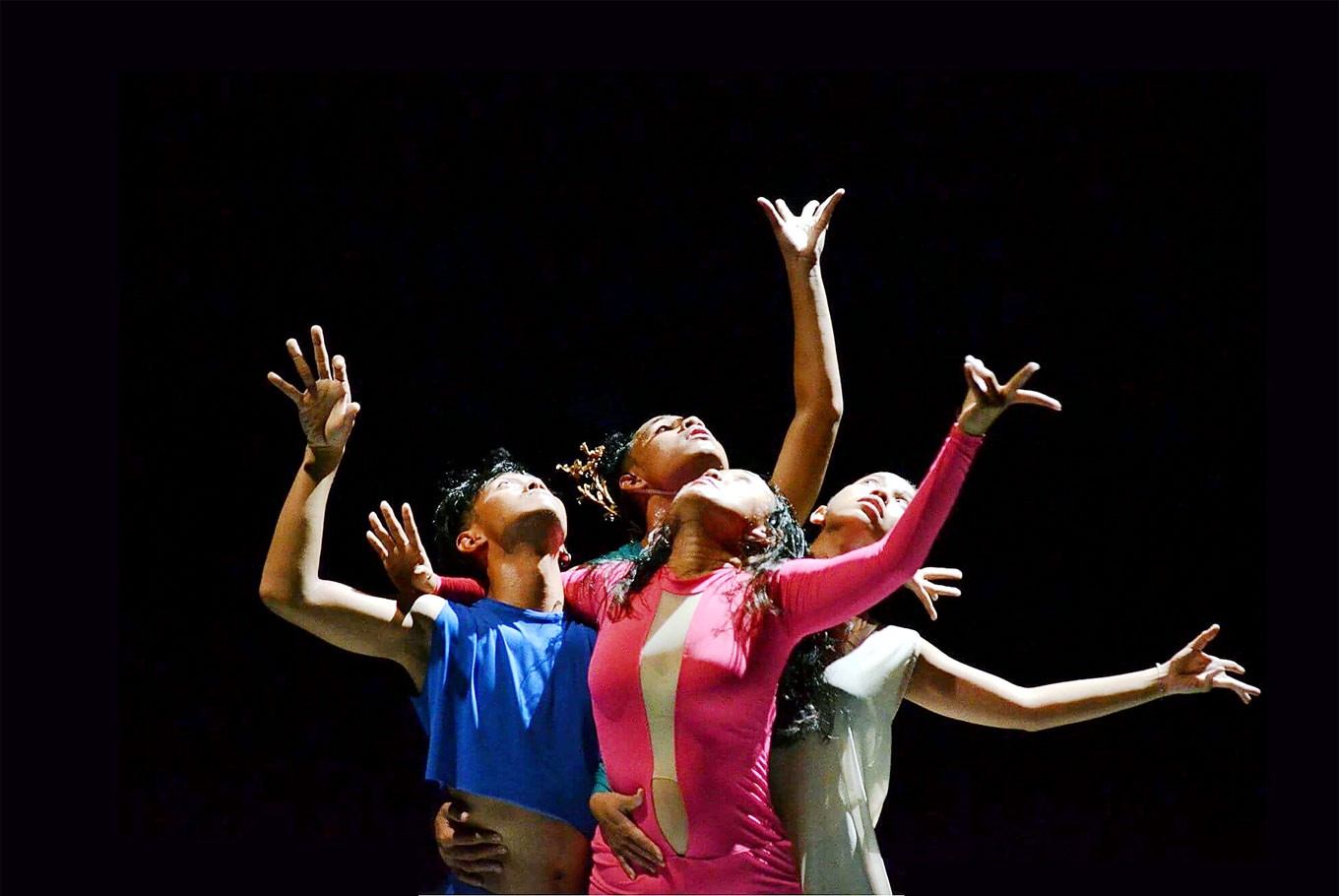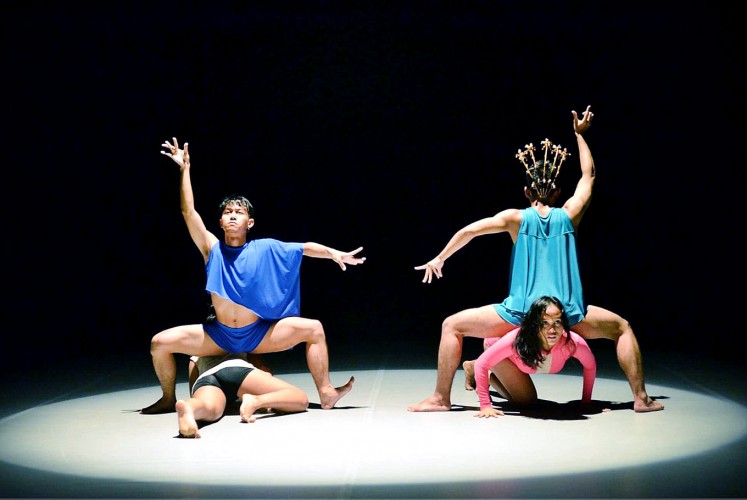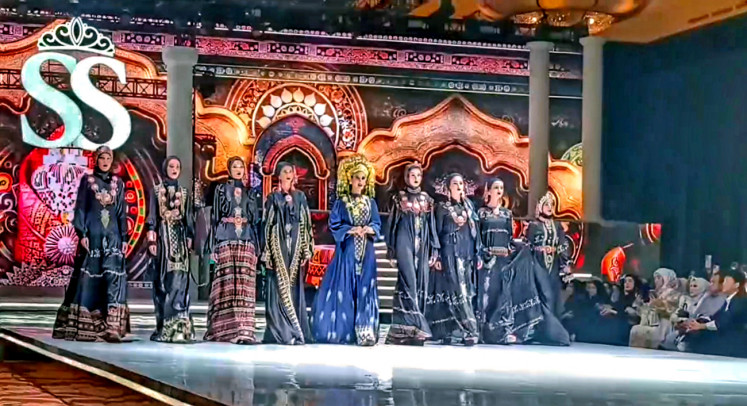Otniel Tasman: Dancing through culture, identity intricacies
The art of dance is a complex thing to behold and ponder.
Change Size
 Gazing: Otniel Tasman's Cablaka is rooted in his affinity for the traditional lengger dance of Banyumas, Central Java. (Salihara Community/Witjak Widhi Cahya)
Gazing: Otniel Tasman's Cablaka is rooted in his affinity for the traditional lengger dance of Banyumas, Central Java. (Salihara Community/Witjak Widhi Cahya)
F
rom a young age, Otniel Tasman has had a love of dance. Born in 1989, the Banyumas, Central Java native saw his first lengger performance – a traditional dance unique to the region – at the tender age of 5.
“I always remember the moment the lengger dancers were getting ready to perform. That sparked my enthusiasm, and I began trying to express what I saw by competing in dangdut competitions,” Otniel recalled after performing his latest piece, Cablaka, at the Salihara Community art and culture center in South Jakarta.
Cablaka was part of the biannual Salihara International Performing-arts Festival (SIPFest), which runs through Sept. 9.
Otniel’s passion led him to delve deeper into the art of dance, and he joined the Massayu dance studio at the age of 8 to be exposed further to lengger.
His continuing fascination in the performing art led him to enroll in the dance major at the Indonesian Institute of the Arts in Surakarta. His studies furthered his resolve to become a choreographer and researching into lengger, which is still performed today.

That cultural influence is prominent in Cablaka, which Salihara produced to commemorate the center’s 10th anniversary.
Combining elements of lengger and dangdut koplo, Cablaka is a striking piece in which the dancers’ movements could be described as “erotic”, presenting a complemental duality of masculine and feminine energy.
Otniel says that Cablaka portrays the attitude of the Banyumas people: “straightforward, transparent, goes with the flow, yet solid in their fortitude”.
“[Cablaka] comes from myself, how I navigate my own culture. With lengger, there is the matter of [how I present myself] on and off the stage, and it has brought me to better understand myself through lengger,” said Otniel.
For the dancer-choreographer, lengger represents the value of fertility, in which man and woman coalesce into a “perfect” singular energy.
“When an individual is able to manage their masculine and feminine energies, the dualism of male and female, I think that represents perfect humanity.”
Lengger is steeped in the fluidity of gender, a characteristic that could be connected to the LGBT community. In Banyumas’ lengger lanang, a male dancer performs as a woman, complete with make-up and mannerisms.
However, Otniel said that lengger was first and foremost a cultural heritage that existed long before the advent of the LGBT movement in recent history.
“For our ancestors, it is special because they embraced [the spirit of pluralism]. It is sort of a third gender, like bissu,” he explained, referring to one of the five genders in Bugis culture.

Otniel also described Cablaka as “the manifestation of a minority wanting to survive” – a statement that could be interpreted in a myriad of ways.
“It comes from my own experience, wherein my art form is considered an art for the masses, the lower classes. Within it, I am also a man who plays a woman on stage, so it is also about my own experience with discrimination.
“In that moment, I am celebrating my own body, and I continue to celebrate it steadfastly and consistently, which helped me to survive,” Otniel said, noting that Cablaka also expressed his empathy for his minority friends.
“Through art, we can embrace others. Art is a fluid space where anyone is free to express themselves. How we have maintained that freedom is also why the vulnerable can survive.”
In creating Cablaka, Otniel went through a painstaking process from the original concept until its stage premiere.
“There were a lot of subjects I needed to learn about beforehand, such as gender, philosophy, even the movement. I have to use all five senses to make sure I connect with my own body as well as to others,” he said, and that he explored and improvised lengger for both the dancers as well as the audience.
“In the end, every dancer discovered something new from [exploring lengger]; sight begets movement, movement begets sight. And that is certainly something new for me.”
Otniel hopes that the audience can connect with Cablaka through the dancers’ lengger movements, and that they can take home part of that energy to ponder.
For people who might not be familiar with the cultural background to his work, Otniel said they need not worry about their capacity to enjoy his dance pieces.
“In music and dance, we create these small nuances that the audience can focus on, rather than the meaning behind the vocals, for example. In expressing longing, it’s a matter of how the body can be used to convey that feeling through movement, even though the words could express the feeling as well.”
With a string of international recognition for his work, including Lengger Laut( 2014 ) and Nosheheorit ( 2017 ), both performed at last year’s Europalia Arts Festival in Belgium, Otniel expressed his wish to perform on an international stage once again.
Even so, he has no intention of churning out new pieces by the month, saying that he wanted to perfect each piece and create only one new piece in a single year.
“Of course, I’m not too ambitious. I’m sure that [Cablaka] will have its own future. If I’m dedicated to my work and not doing it half-heartedly, God will grant it a future.”









